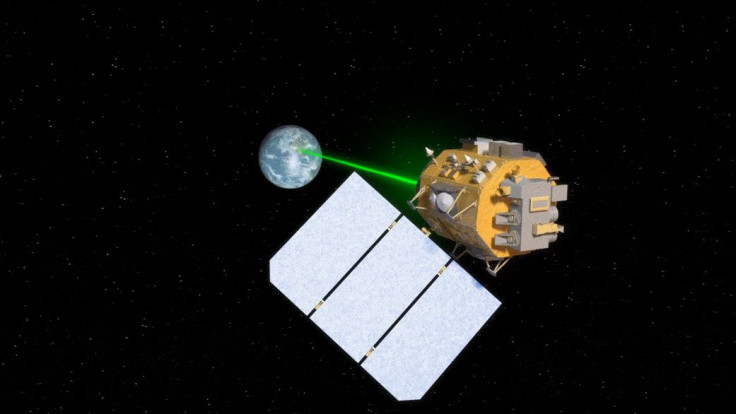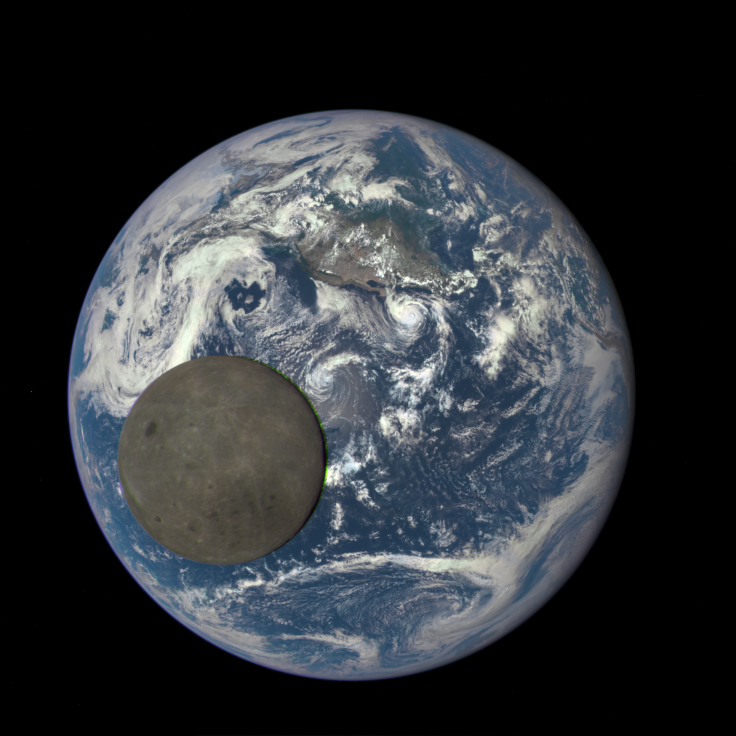Lasers In Space: Debris Removal, Power Supply To Moon Among Proposed Applications

NASA’s Mars 2020 and the European Space Agency’s (ESA) ExoMars rovers have more in common than just their destination and the currently scheduled year of launch. Among other things, they both feature instruments that use lasers to achieve their scientific objectives, which are astrobiological in nature.
Mars 2020 has an instrument called SuperCam which “can identify the chemical and mineral makeup of targets as small as a pencil point from a distance of more than 20 feet (7 meters).” It does that by firing a burst of laser, lasting barely a few nanoseconds, which vaporizes its target. The atoms in the resulting vapor are excited and display clear chemical signs of their origin, which a spectrometer analyzes to determine the chemistry of the target.
The ExoMars rover does something quite similar when it comes to using lasers to explore other worlds. In a statement Jan. 10 on the ESA website, a researcher with the project said its laser can target objects hundreds of meters away as well.
“We fire a laser at a material of interest and measure how much its color is changed as it scatters off the surface, to identify the molecules responsible. This is a well-established technique terrestrially — used in all kinds of fields from security to pharmacology to art history — either in labs or using hand-held devices,” Melissa McHugh of Leicester University in the United Kingdom, explained.
But the use of lasers is far from restricted to astrobiology projects, if new proposals are anything to go by. A Russian company plans to supply electric power to the surface of the moon using lasers, while Chinese scientists are proposing space debris be cleared (or at least reduced in size) by employing the destructive power of lasers.

Russia’s Rocket and Space Corporation Energia (RSC Energia) is working on a plan that will allow the partially government-owned company to transmit power to future human bases on the moon from a platform that is in orbit around Earth’s only natural satellite, with the energy traveling along laser beams.
Details of the plan appeared on Russian state-owned RIA Novosti news agency’s website Jan. 9. According to the report, the transmission platform would be placed 100-200 kilometers above the surface of the moon in a polar orbit (the intent seems to be the explorations of lunar polar regions), while the range of energy transfer would be 100-300 kilometers. In 24 hours, there could be up to 12 power transfers, each for 5 minutes, totaling to 900 watt-hours of energy.
The orbiting platform on which the power transmission equipment is placed could be Luna-26, a Russian lunar polar orbiter currently scheduled for launch in 2021. The power transmission system is envisaged to have a life of about 10 years. Such a system seems logical to have if Russians or humans are serious about having any sort of settlement on the surface of the moon.
Another space-related issue for which lasers are being proposed as a solution is space debris. Humans cannot, at least yet, design any machines that will last forever. And so, when rockets and spacecraft go up into space and fall into disrepair, especially under the harsh environment outside the safety of Earth’s atmosphere, they slowly turn into junk. There are also accidents in space sometimes, creating even more junk. And this space junk is perhaps the single biggest threat to future space exploration.
About 17,000 pieces of debris larger than an apple are regularly tracked by NASA, which also tracks another half a million pieces that are larger than a marble. There are another 200 million pieces, each bigger than a millimeter in size, estimated to be floating in space in orbit around the planet. Travelling at 17,500 miles an hour, even a tiny speck can cause a lot of damage to a satellite, if it were to hit one.
Chinese scientists, mostly from the country’s Air Force Engineering University, published a paper in the journal Science Direct, discussing a simulation of an orbital platform — this one around Earth — to house a massive laser to shoot at pieces of space junk.
The satellite-mounted laser would shoot 20 bursts in a second for 2 minutes at targets between 1 and 10 centimeters in size. That amount of energy would be enough to either destroy the object or at least to put it on an Earth-bound trajectory, where it would burn up in the atmosphere upon reentry. However, if the pieces just become smaller, that would continue being a problem.

This is not the first time lasers have been thought of as a solution to space debris, but it is the first time scientists have proposed a seemingly realistic method that removes the entire process of the surface of our planet. In 2015, a team of scientists from Japan’s RIKEN Computational Astrophysics Laboratory had proposed installing such a laser system on the International Space Station.
Other ideas for clearing space debris have been tried. An electrodynamic tether with an especially designed net was sent into space by Japan’s space agency JAXA in December 2016, but it failed to deploy. Another idea floated by a French scientist is to use a magnetic tug on a spacecraft, a strong magnetic field interacting with the electromagnets on board satellites to change their orbits, as necessary.
© Copyright IBTimes 2025. All rights reserved.





















